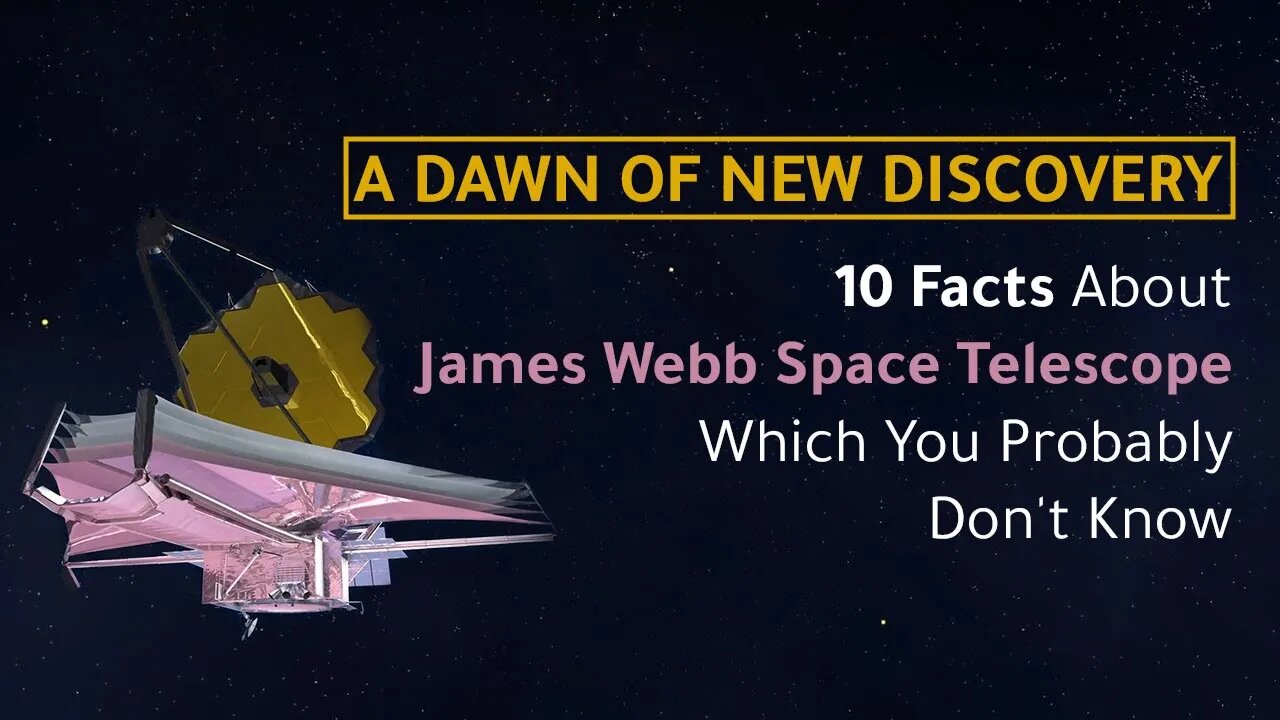Premium Only Content

A Dawn of New discovery - 10 Facts About James Webb Space Telescope Which You Probably Don't Know.
A Dawn of New Discovery
10 Facts About James Webb Space Telescope Which You Probably Don't Know.
On December 25, 2022, NASA launched its biggest, the most powerful and expensive telescope into the space named as James Webb telescope. the telescope is developed by NASA with the help of European Space Agency and the Canadian Space Agency.
In this small video we will give you 10 things about the James Webb telescope which you probably don't know. We are starting right now.
Number 1. The James Webb Telescope is the most powerful and the most expensive telescope ever built by the humans.
Number 2. For the next 30 days, James Webb telescope will travel 1 million miles away from the earth. It will orbit there for other 6 months before it can send its first feed.
Number 3. The destination of the James Webb Telescope is to reach Lagrange point. At that point, the gravity of the sun, the earth and James Webb’s own orbital momentum will keep it at a specific place without using much fuel.
Number 4. James Webb telescope has to pass through 344 "single-point failures," to be successful.
Number 5. The instruments of James Webb telescope need to maintain minus 370 degree Fahrenheit temperature to work properly. The required temperature will be maintained by built in sunshield which will prevent the heat of the sun to reach its instruments.
Number 6. The James Webb Telescope works on infrared technology, that means it can peer through space dust and see celestial bodies in infra-red.
Number 7. James Webb Telescope can even detect the light which is traveling towards earth from more than 13 billion years, that means we can literally look back into time.
Number 8. The telescope will also help us to track unknown exoplanets and whether there is any life present on those planets.
Number 9. James Webb will compare the early galaxies to current one, it will reveal a stunning data on how galaxies have evolved in time.
Number 10. The telescope is designed to spent almost 5 to10 years in space before it runs out of the fuel.
-
 LIVE
LIVE
Laura Loomer
2 hours agoEP134: EXPOSED: Microsoft Allowed China Access To DOD Cyber Systems
13,896 watching -
 LIVE
LIVE
SpartakusLIVE
3 hours agoFriday Night HYPE || WZ Solos, PUBG, and maybe even OFF THE GRID?!
184 watching -
 58:41
58:41
BonginoReport
8 hours agoTrump Impersonations & Friday Fun w/ Shawn Farash - Nightly Scroll w/ Hayley Caronia (Ep.93)
65.7K16 -
 LIVE
LIVE
The Mike Schwartz Show
7 hours agoTHE MIKE SCHWARTZ SHOW Evening Edition 07-18-2025 with guest Congressman Buddy Carter!
4,255 watching -
 LIVE
LIVE
FusedAegisTV
4 hours agoRumble Smackdown! #004 Tekken 8 $100+ Online Tournament !bracket !prizepool
106 watching -
 LIVE
LIVE
Sarah Westall
1 hour agoPlanning is Over, War has Started: First Stage of Economic Global War: Commodities w/ Andy Schectman
259 watching -
 LIVE
LIVE
BSparksGaming
10 hours agoDonkey Kong BONANZA Walkthrough Gameplay! (Part 2)
125 watching -
 LIVE
LIVE
LFA TV
21 hours agoLFA TV ALL DAY STREAM - FRIDAY 7/18/25
640 watching -
 LIVE
LIVE
SilverFox
5 hours ago🔴LIVE - Fortnite - Maybe ABI Later + FoxChat DOUBLE XP
88 watching -
 1:21:58
1:21:58
Kim Iversen
6 hours ago"There Is No Death": What This Man Saw Outside His Body Will Blow Your Mind
84.3K57